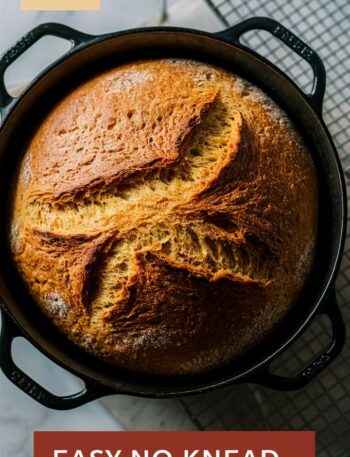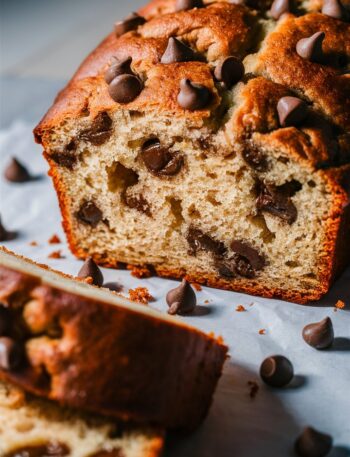Cottage cheese bread is a revolutionary take on traditional homemade bread, combining the rich creaminess of cottage cheese with the comforting texture of freshly baked bread. This loaf is soft, slightly chewy, and incredibly moist, making it perfect for breakfast, sandwiches, or as a side to hearty meals. Unlike regular bread, this recipe packs in extra protein, making it an excellent choice for health-conscious eaters and families looking to add nutritional value to their meals.
Whether you’re a beginner in baking or a seasoned home baker, this recipe will guide you through every step with clear, actionable instructions and tips to ensure your bread comes out perfect every time.
Why You’ll Love This Cottage Cheese Bread
Super Soft and Moist
Cottage cheese adds a subtle richness to the dough, which helps retain moisture during baking. The result is a tender, soft loaf with a lightly chewy crumb. Unlike standard white bread, this loaf won’t dry out quickly, keeping it fresh and enjoyable for days.
Protein-Packed
Each slice of cottage cheese bread contains a higher protein content than ordinary bread. Protein is essential for muscle repair, energy, and satiety, making this loaf a nutritious choice for breakfast or as a snack.
Versatile and Delicious
This bread works well with both sweet and savory toppings. Toast it with butter and honey, use it for sandwiches, or enjoy it alongside roasted chicken, salmon, or creamy soups. The slightly tangy flavor complements a wide variety of dishes.
Easy to Make
No need for complicated techniques. Even if you’ve never kneaded dough before, this recipe guides you step-by-step, offering tips to make the process simple and enjoyable.
The Science Behind Cottage Cheese in Bread
Adding cottage cheese to bread isn’t just for taste—it changes the bread’s texture and nutritional profile in meaningful ways:
- Moisture Retention: The water content in cottage cheese blends with the flour, resulting in a dough that remains soft even after baking.
- Protein Boost: Cottage cheese is naturally high in protein, which enhances the bread’s nutritional value without altering flavor.
- Flavor Enhancement: The mild tang of cottage cheese adds subtle complexity to the dough, balancing sweetness and savoriness naturally.
- Gluten Interaction: The proteins in cottage cheese slightly weaken gluten formation, creating a softer, less chewy crumb compared to traditional breads.
Ingredients You’ll Need
Essential Ingredients
- 2 ¼ teaspoons (1 packet) active dry yeast
- ¼ cup warm water (110°F / 43°C)
- 1 cup cottage cheese (room temperature)
- 2 tablespoons butter (softened)
- 1 tablespoon honey or sugar
- 1 teaspoon salt
- 1 large egg (room temperature)
- 2 ¾ cups all-purpose flour or bread flour
Optional Add-Ins
- 1 tablespoon chopped fresh herbs (rosemary, chives, or thyme)
- ¼ cup grated Parmesan or cheddar cheese
- 1 tablespoon flaxseeds or chia seeds
Tip: Use high-quality, fresh ingredients for the best flavor and texture. Full-fat cottage cheese yields a creamier loaf, while low-fat versions will be slightly lighter but still delicious.
Step-by-Step Instructions
1. Activate the Yeast
- In a small bowl, combine warm water and yeast.
- Let it sit for 5–10 minutes until foamy. This ensures the yeast is active and ready to leaven your bread.
2. Make the Dough
- In a large mixing bowl, blend cottage cheese, butter, honey (or sugar), salt, and egg until smooth.
- Stir in the yeast mixture and 1 cup of flour.
- Gradually add the remaining flour, mixing until a dough forms.
3. Knead the Dough
- Turn the dough onto a floured surface and knead for 8–10 minutes until smooth and elastic.
- Stand mixer alternative: Use a dough hook for 5–7 minutes.
Tip: Kneading develops gluten, which is essential for a structured loaf that rises evenly.
4. First Rise
- Place the dough in a greased bowl, cover with a kitchen towel, and let rise in a warm place for 1 hour, or until doubled in size.
- Pro tip: Avoid drafts or cold spots; yeast performs best in consistent warmth.
5. Shape & Second Rise
- Punch down the dough and shape it into a loaf.
- Place it in a greased 8×4 inch loaf pan, cover, and let it rise for 30–40 minutes until slightly puffed.
6. Bake the Bread
- Preheat oven to 350°F (175°C).
- Bake for 30–35 minutes until the top is golden brown and the loaf sounds hollow when tapped.
- Cool completely before slicing to maintain structure.
Tip: If the crust browns too quickly, loosely cover the top with foil during the last 10 minutes.
What to Serve with Cottage Cheese Bread
Cottage cheese bread is versatile, pairing wonderfully with both sweet and savory options:
- Breakfast: Toast slices with butter, honey, or jam.
- Sandwiches: Perfect for grilled cheese, avocado toast, or turkey sandwiches.
- Side Dishes: Complements roasted chicken, salmon, or soups like creamy tomato or chicken noodle.
- Snack: Enjoy with soft cheese, hummus, or nut butter.
Variations & Flavor Twists
Sweet Version
- Add 2 tablespoons sugar or honey to the dough.
- Mix in ¼ cup raisins, chopped dried apricots, or chocolate chips.
- Optional: Sprinkle cinnamon on top before baking.
Savory Version
- Mix in herbs such as rosemary, thyme, or chives.
- Add shredded cheddar or Parmesan cheese for extra flavor.
- Sprinkle sesame or sunflower seeds on top before baking.
Gluten-Free or Keto Version
- Replace flour with a 1:1 gluten-free blend.
- Add 1 teaspoon xanthan gum for structure.
- For keto, use almond flour and reduce yeast slightly.
Storage, Reheating, and Freezing Tips
- Room Temperature: Store in an airtight container or wrapped in foil for up to 3 days.
- Refrigerator: Keeps fresh for up to 1 week.
- Freezing: Slice the bread and wrap individually; store for up to 2 months.
- Reheating: Toast slices or warm in a 300°F (150°C) oven for 5 minutes.
Pro Tip: Freshly baked bread is best enjoyed within the first 24 hours, but freezing preserves its softness.
Health Benefits of Cottage Cheese Bread
- High Protein: Supports muscle growth and keeps you full longer.
- Lower Glycemic Index: Compared to white bread, it can reduce spikes in blood sugar.
- Rich in Calcium: Cottage cheese boosts calcium intake, supporting bone health.
- Versatile Nutrition: Add seeds or nuts for omega-3 fatty acids and extra fiber.
Tips for Perfect Homemade Bread Every Time
- Temperature Control: Yeast works best between 105–115°F (40–46°C).
- Precise Measurements: Too much flour makes bread dense; too little makes it sticky.
- Kneading: Proper gluten development ensures a light, airy loaf.
- Rising: Don’t rush rising times; patience yields better texture.
- Baking: Always preheat the oven and monitor the crust color.
Frequently Asked Questions (FAQs)
Q1: Does cottage cheese make bread heavy?
A: No, if measured correctly, cottage cheese creates a soft, moist texture without weighing the bread down.
Q2: Can I use low-fat or non-dairy substitutes?
A: Yes. Low-fat cottage cheese works, though the loaf may be slightly less rich. Non-dairy alternatives like almond or soy-based cheese can be used, but texture may vary.
Q3: Why is my bread dense?
A: Common reasons: under-kneading, incorrect flour measurement, or yeast not fully activated. Follow step-by-step instructions and let the dough rise fully.
Q4: Can I add herbs or seeds?
A: Absolutely! Herbs, seeds, and cheeses can enhance both flavor and nutrition.
Conclusion
Cottage cheese bread is more than just a loaf—it’s a soft, moist, protein-packed marvel that transforms your homemade bread experience. With its versatile flavor, easy preparation, and nutritional benefits, it’s ideal for breakfast, lunch, or dinner. Whether you enjoy it toasted, in a sandwich, or alongside a savory main dish, this bread will quickly become a favorite in your kitchen.
Experiment with sweet or savory variations, add seeds or herbs, and enjoy the satisfaction of creating bakery-quality bread at home.
Tip: Share this recipe with friends, pin it on Pinterest, or make it for a weekend brunch—you’ll be surprised how quickly this cottage cheese bread disappears!




